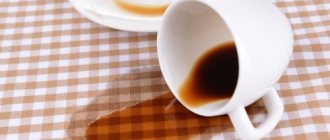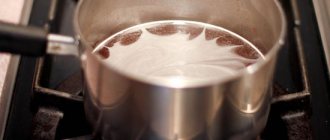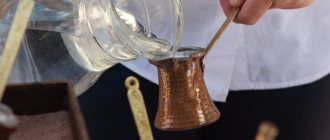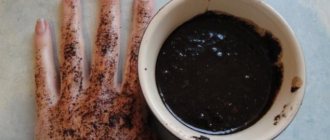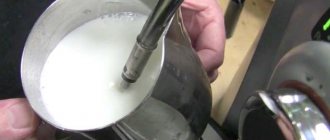The composition of natural coffee changes after brewing; caffeine, organic acids, tannin pass into the water, but most of the beneficial compounds that can be used by plants remain in the grounds. These are nitrogen substances (up to 2%) and minerals (potassium, magnesium phosphorus, iron and calcium), B vitamins, residues of caffeine and its derivatives (up to 6%).
Coffee as fertilizer
Naturally, the effectiveness of coffee cannot be compared with any fast-acting fertilizer, and certainly not a substitute for complex fertilizing. But it is worth recognizing that adding coffee grounds to the soil around plants has a beneficial effect on them.
Decaying organic matter increases the biological activity of the soil. Firstly, it saturates the soil with nitrogen. Secondly, it attracts earthworms, which loosen the soil. Third, coffee used as a fertilizer allows plants to more easily absorb copper, magnesium, potassium and phosphorus from the soil.
Even though coffee contains 2% nitrogen, this does not mean that it can replace a complete nitrogen fertilizer. Since coffee grounds take a long time to decompose, the elements are released slowly.
There is an opinion that coffee significantly increases the acidity of the soil, so it is suitable as a fertilizer only for plants that require a low pH level (conifers, rhododendrons, heathers, etc.). However, this is not quite true. Coffee does “sour”, but only when fresh.
This is interesting:
2019: what awaits us in the New Year - predictions of astrologers
Sleeping coffee grounds have a neutral reaction - about pH 6.5-6.8 (with an ideal acid-base balance of pH 7). To be sure, it is advisable to rinse the grounds with clean water before using them in the garden.
Use Cases
To feed plants, it is better not to use too much coffee , otherwise a crust will form on the surface of the earth, which will prevent the free penetration of oxygen to the root system. If the gardener incorrectly calculated the rate of grounds to be added to the soil, this may negatively affect the growth rate.
Experts have developed the three most effective ways to use coffee cake to feed crops:
- The grounds can be scattered evenly around the plant, then watered moderately.
- The cake is dug into the soil at the dacha.
- A solution in which coffee residues are mixed with water has a special effect. This composition can be used to water flowers and trees, as well as the soil for planting seedlings.
The last option is considered the most popular, since nitrogen slowly dissolves in the soil, due to which the plant will receive nutrients for a long time. The first method should be used with extreme caution so that dense crusts do not form around the plants. The thicket perfectly repels snails and ants.
READ ALSO: How to make quick compost using dark plastic bags
Plants grow much better when coffee residues have been dug directly into the soil. This procedure can be performed in two ways:
- prepare compost to fertilize the soil;
- Before planting, add cake to each hole.
You need to dig in the nutrient mixture very carefully so as not to accidentally damage the roots of the plants. It is better to lay high-quality mulch on top - it will prevent the soil around the crop from drying out.
Coffee grounds compost
Composting used coffee couldn't be easier - just throw the grounds into the compost heap. Again, given the controversy about its acidity, for greater peace of mind it is advisable to pre-rinse it under running water.
Following the grounds, you can also send paper coffee filters. All this will rot and benefit the plants.
The only important nuance that should be taken into account when composting is the proper selection of compost components. In addition to coffee grounds and other food waste, you need to add more “solid” components to the compost pit: straw, wood debris, manure, grass clippings, etc. Coffee grounds should make up no more than 15-20% of the total compost, otherwise it simply will not rot.
What can be made from coffee beans?
Coffee beans are an ideal material for creativity. They are not harmful to health and do not poison the air with toxins; they are beautiful in themselves, and can be easily painted if necessary. The scope of their application is limited only by imagination.
Painting
Even someone who doesn’t know how to draw can make a picture out of coffee beans. The secret is simple - the image is first printed on a printer, and coffee is glued on top of the paint. In this case, there is no need to cover the entire canvas with grains - they are placed only where there are dark areas. For example, if this is a portrait, then only the hair, eyebrows, eyes, lips and nose are blocked. Where fine lines are needed, it is not practical to use whole grains, so they are crushed with a hammer.
Topiary
Topiary is a small (usually up to 20–30 cm in height) tree made from decorative materials. However, it does not have to have a direct resemblance to a tree - for example, topiaries in the shape of a ball or a heart are often found.
To create it you will need the following tools and materials:
- newspaper or toilet paper;
- a small pot or cup for a stand;
- alabaster and water;
- awl;
- a stick (strong enough to support the weight of the top of the topiary, this could be a kebab skewer);
- decorations - optional (colored beads, ribbons or something else);
- quick-setting glue;
- coffee beans;
- PVA glue;
- glue brush;
- disposable plastic or paper cup.
The work is performed according to the following algorithm:
- A piece of newspaper is crumpled in your hands to form a small ball.
- In a glass, dilute PVA glue in half with water.
- The remaining newspaper is torn to shreds.
- The brush is dipped into a glass with an adhesive solution and a newspaper ball is lubricated, after which scraps of paper are randomly placed on top of the sticky layer. Then the solution is applied again and the ball is covered with paper. This operation is repeated until the ball acquires an almost ideal shape and the desired size. It is recommended to make a ball with a diameter of at least 10 cm.
- The base blank is left to dry. This process may take several days, but it cannot be accelerated by placing the ball on the battery or influencing it in any other way.
- When the ball is ready, it is pierced with an awl and a stick moistened with quick-drying glue is inserted into the resulting hole.
- Next, they begin to decorate the topiary by covering the paper ball with coffee beans. Quick-drying glue is also suitable for this.
- Now it's time to prepare the stand. To do this, alabaster is mixed with water in a 2:1 ratio (per 1 kg of alabaster - 0.5 liters of water; the amount of ingredients should be taken in accordance with the volume of the pot or cup). The result will be a slurry that will begin to thicken in about 5 minutes. Complete hardening will occur after 25–30 minutes, so you need to have time to stick a stick with topiary into the not yet hardened solution and hold it in one position until the alabaster turns into stone.
We recommend: Cappuccino without a coffee machine: prepare a delicious drink at home
The final stage is decorating the topiary. To disguise alabaster, you can sprinkle coffee beans or colored beads on top of it. The skewer should be braided with ribbons or painted with golden paint. In this case, a pot wrapped in fabric of the same shade will look beautiful.
Stand for pencils or brushes
To make an original stand out of coffee beans, just pour them into a transparent glass container (a vase, an unusual jar, even a small round aquarium will do). In addition to the fact that such a stand will become a decorative item, it will also scent the air in the room. When the smell wears off, you can replace the grains with fresh ones.
Coffee grounds mulch
Many gardeners use coffee grounds as an environmentally friendly mulch. It is safe for plants, releases nutrients in the soil, enriches it with nitrogen, attracts earthworms, looks natural and is pleasing to the eye.
However, the main disadvantage of such mulch is that it can begin to mold. To prevent this from happening, we again recommend rinsing the grounds with clean water and drying them before spreading them over the soil surface.
This is interesting:
Antioxidants – eliminate the “rust” of aging. Do “rejuvenating apples” exist? Yes! Eat These Three Foods and Don't Age
Also, if you drink coffee with sugar and milk, naturally they will remain on the coffee grounds. Sweet mulch can attract ants and other insects. Therefore, it is necessary to wash the mass before drying.
Coffee grounds in indoor floriculture
There are often tips to water potted plants with fresh coffee. Under no circumstances should you do this: there is a high probability that mold will appear on the coffee cake, and then the flower will have to be saved.
It is believed that the grounds are quite valuable feeding, primarily for begonias and azaleas: after fertilization, they bloom better and shed fewer buds. However, like any organic matter, coffee cake does not decompose well in pots. In order for nitrogen compounds to be released in a form that is easily digestible for plants, soil bacteria are needed. Therefore, it is recommended to regularly water indoor plants with a solution of Fitosporin-M.
Options for using coffee grounds for plants in indoor floriculture:
- when transplanting an indoor flower, 1–2 tablespoons of cake are poured onto a layer of expanded clay as additional drainage;
- when replanting, the grounds are mixed into the soil mixture at the rate of 1–2 tablespoons of cake per 1 liter of soil;
- To prevent cats from touching the pot, pour a mixture of dry coffee with ground orange zest along the edge of the flowerpot.
Coffee grounds are not a panacea. In order for indoor plants to be beautiful and healthy, they still need to be periodically fed with special fertilizers.
Soil improver
If the quality of the soil on your site leaves much to be desired (it is too light, or, conversely, not sufficiently air- and moisture-permeable), its structure needs to be improved. Good soil “breathes” and easily allows air and moisture to pass through. To achieve this effect, you can add coffee grounds to the top layer of soil.
Coffee based scrub: how does it work?
Caffeine contained in coffee beans is a universally recognized effective antioxidant that improves blood circulation, tones the skin, and relieves fatigue. A coffee body scrub will make your skin look radiant and fresh at any time of the day. The magical properties of ground coffee scrub are easy to explain. A certain effect on the skin is achieved due to the special components of coffee beans, such as:
- caffeine – serves as protection against adverse external influences, perfectly tones the skin;
- carotenoids – give a healthy color to your skin, are a preventative against the development of skin diseases;
- antioxidants – help increase the tone and elasticity of the skin;
- polyphenols – accelerate the processes of natural synthesis of collagen and elastin in the cells of the skin epidermis, as a result of which the skin tightens and facial contours become more pronounced;
- Chlorogenic acid – protects the skin from excessive exposure to ultraviolet radiation.
When the skin is exposed to all of the above substances, blood circulation is activated and deep cleansing is ensured. Since coffee is quite an effective remedy, it should be noted that there are some contraindications for the use of scrubs with ground coffee, in particular for people who have:
- overly sensitive, delicate skin;
- serious skin diseases;
- allergic reactions to natural coffee.
Pest barrier
There is an opinion that coffee grounds scattered around plants serve as a reliable barrier against slugs and snails, which can be a real scourge of some crops.
In addition, according to some gardeners, coffee can not only repel, but also destroy the larvae of insect pests, including mosquitoes and bedbugs.
Of course, in the fight against insects dangerous to the crop, you shouldn’t rely solely on coffee, but it won’t hurt to bring it to your side as an additional ally.
This is interesting:
10 ways to use tea for other purposes: useful, useful!
Use of coffee grounds in crop production
Evolution has worked hard on the coffee bean, endowing it with unique abilities for survival. The aroma of roasted coffee, pleasant to humans, is the result of a sharp release of essential oils contained in the grain. Green coffee does not smell as intense; people find its aroma similar to herbal coffee. But a faint coffee smell is enough for insect pests: it repels them.
The grain remains viable even after passing through the gastrointestinal tract of animals. And thanks to caffeine, lush tropical and subtropical vegetation cannot drown out the tiny, barely hatched sprout of the coffee tree. Caffeine serves as an inhibitor (suppressant) for the growth of plants adjacent to the coffee tree.
Making coffee scrub at home
You can make a coffee scrub at home from coffee from a coffee machine in different ways, and you can use various additives. It is important to keep in mind that making a coffee scrub requires choosing the right coffee beans. It is better to use natural, roasted coffee without flavorings. It should be finely ground so as not to injure the skin with grains. The easiest way to prepare a scrub is to use used coffee grounds as a base. If coffee is not your favorite drink, then pour one quarter glass of fresh coffee, ground for espresso coffee machines, with boiling water to the consistency of a thick paste and leave to brew for about a quarter of an hour. These coffee grounds can be used as a stand-alone scrub, as well as as a basis for preparing all kinds of other body scrubs/masks.
- For dry skin, a coffee-sour cream scrub is best. To prepare it, you just need to add two tablespoons of sour cream to the coffee grounds you have already prepared. Instead of sour cream, you can use almond or olive oil as an additive to coffee grounds - this mixture will also be good for dry skin types.
- Oily skin can be treated with a coffee yogurt scrub. To prepare it, you need to stir one tablespoon of ground coffee and a few tablespoons of low-fat plain yogurt.
- For normal skin, a coffee gel scrub is best. Simply mix a tablespoon of coffee with some pH-neutral shower gel.
It is advisable to use the prepared scrub from ground coffee no more than two to three times a week. It should be applied to the skin, after which the area of application is massaged with circular movements of the fingers or hand for about one minute, then the scrub is washed off with water. Thus, a simple coffee scrub to prepare and use will help you and your skin become attractive, toned and energized.


